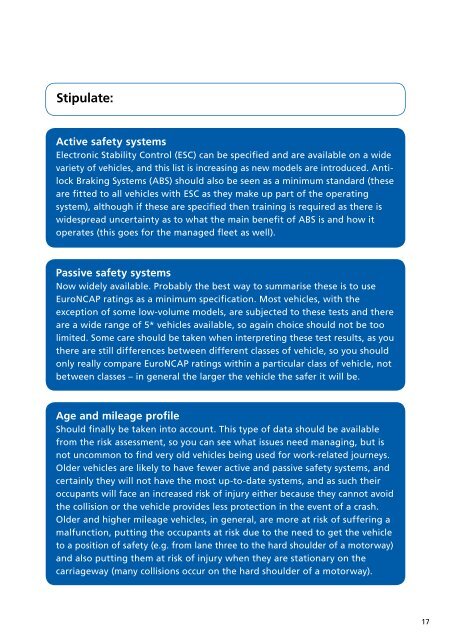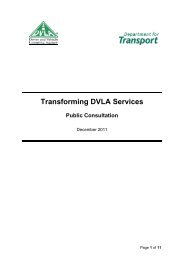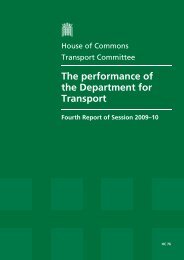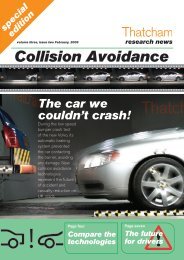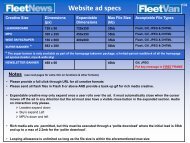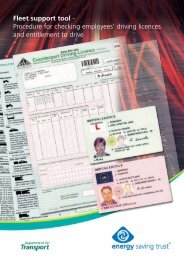Zurich Guide to Managing Grey Fleet Risks - Fleet News
Zurich Guide to Managing Grey Fleet Risks - Fleet News
Zurich Guide to Managing Grey Fleet Risks - Fleet News
You also want an ePaper? Increase the reach of your titles
YUMPU automatically turns print PDFs into web optimized ePapers that Google loves.
Stipulate:<br />
Active safety systems<br />
Electronic Stability Control (ESC) can be specified and are available on a wide<br />
variety of vehicles, and this list is increasing as new models are introduced. Antilock<br />
Braking Systems (ABS) should also be seen as a minimum standard (these<br />
are fitted <strong>to</strong> all vehicles with ESC as they make up part of the operating<br />
system), although if these are specified then training is required as there is<br />
widespread uncertainty as <strong>to</strong> what the main benefit of ABS is and how it<br />
operates (this goes for the managed fleet as well).<br />
Passive safety systems<br />
Now widely available. Probably the best way <strong>to</strong> summarise these is <strong>to</strong> use<br />
EuroNCAP ratings as a minimum specification. Most vehicles, with the<br />
exception of some low-volume models, are subjected <strong>to</strong> these tests and there<br />
are a wide range of 5* vehicles available, so again choice should not be <strong>to</strong>o<br />
limited. Some care should be taken when interpreting these test results, as you<br />
there are still differences between different classes of vehicle, so you should<br />
only really compare EuroNCAP ratings within a particular class of vehicle, not<br />
between classes – in general the larger the vehicle the safer it will be.<br />
Age and mileage profile<br />
Should finally be taken in<strong>to</strong> account. This type of data should be available<br />
from the risk assessment, so you can see what issues need managing, but is<br />
not uncommon <strong>to</strong> find very old vehicles being used for work-related journeys.<br />
Older vehicles are likely <strong>to</strong> have fewer active and passive safety systems, and<br />
certainly they will not have the most up-<strong>to</strong>-date systems, and as such their<br />
occupants will face an increased risk of injury either because they cannot avoid<br />
the collision or the vehicle provides less protection in the event of a crash.<br />
Older and higher mileage vehicles, in general, are more at risk of suffering a<br />
malfunction, putting the occupants at risk due <strong>to</strong> the need <strong>to</strong> get the vehicle<br />
<strong>to</strong> a position of safety (e.g. from lane three <strong>to</strong> the hard shoulder of a mo<strong>to</strong>rway)<br />
and also putting them at risk of injury when they are stationary on the<br />
carriageway (many collisions occur on the hard shoulder of a mo<strong>to</strong>rway).<br />
17


